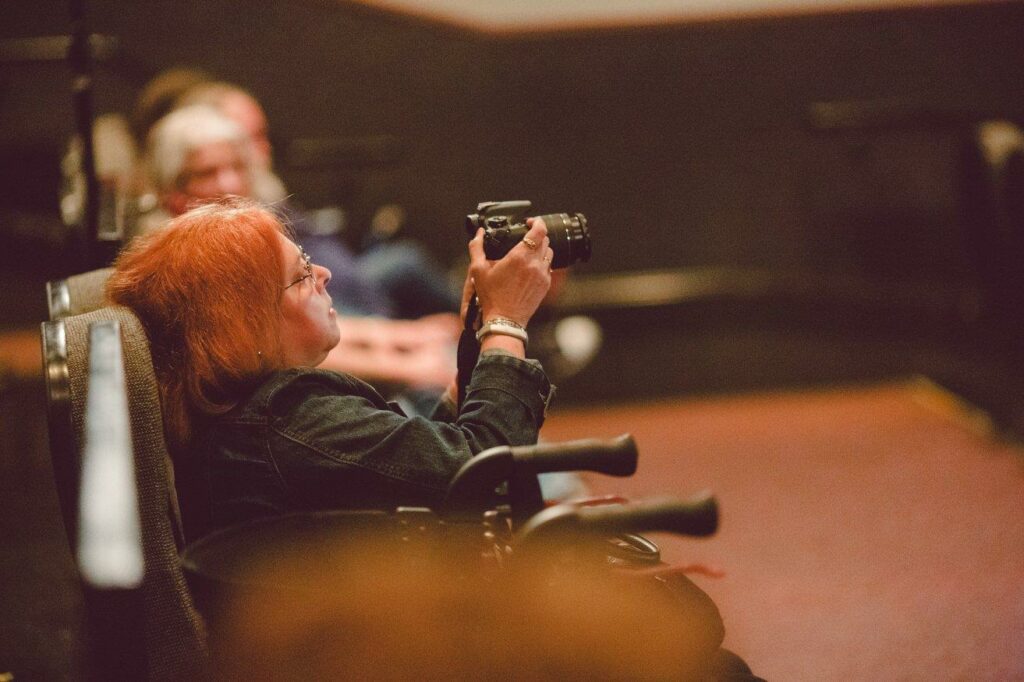
Choose Your Language:
Posted by: The Sumaira Foundation in MOG, ON, Voices of NMO

It was the late 1990’s. I was in my 30’s had constant pain down my left arm, and even though I couldn’t tie the symptoms down to any single event, my orthopedic surgeon had me on the surgery schedule assuming I needed a spinal fusion to fix a slipped disc. Then my MRI results came in, and instead of a herniated disc, I had a lesion on my spinal cord.
Fast forward to Thanksgiving, 2013, I was 43 years old, and developed eye pain and decreased vision over the weekend. I was lucky enough to have a quick diagnosis of optic neuritis and treated with IV steroids, tapering oral prednisone. My neuro-ophthalmologist hoped it was a single episode related to a recent flu shot. Unfortunately, I relapsed five months later. Methotrexate joined my daily dose of prednisone.
July 7th, 2014, at 6:45, my life changed. I was awakened from a deep sleep with excruciating leg spasms from my hips to my toes and wobbly legs. I managed to make it to a scheduled neuro-ophthalmologist appointment that afternoon. While he’s a highly trained specialist, there’s a significant distance between treating eyes and legs. He referred me back to my primary care doctor. In retrospect, I should have gone straight to the emergency room. Instead, I cried the entire hour drive home, and while I researched NMOSD.
Obviously, my primary care doctor knew less about NMOSD than my eye specialist, so I brought information from the internet, and he started ordering tests. Many required insurance approvals, so further delays. While we were in the waiting stage, he didn’t want to cover up potentially important symptoms, so I endured initially with nothing stronger than ibuprofen.
I’d brought in paperwork for an intermittent leave of absence due to the number of tests I had scheduled. He gladly filled them out—just not for the intermittent leave of absence I wanted. He told me I needed to be off work, period. I haven’t been able to work since. I was a retail manager at the time, working twelve-hour shifts and averaging about ten miles walking a day. He told me, “Most people look for reasons to get out of work, but you’d work yourself to death if I let you. You’re a writer, so go home and take a few months to relax and write. He did give me actual pain pills, which made the prospect significantly more appealing.
I also lived in a garden level apartment which meant dealing with steps—and two dogs. I was also the President of the Nebraska Writers Guild. In less than a week, I was on an indefinite leave of absence from work, found a new single-level handicapped accessible apartment, resigned my presidency from the Guild, and was terrified of what the next week might bring. One of the tests leading up to my surgery was to have an upper GI endoscopy. That’s where they give you some IV sedation and you swallow the tube. I woke up pain free for the first time since July 7th. I told my doctor this, and he started me on baclofen, which while not as effective as the stuff they use for twilight sleep, it did begin the first real steps to controlling my symptoms.
I was fortunate to have a year of long-term disability and used part of my retirement account to survive the following year, until my Social Security hearing—which was over quickly. The consulting physician made my case for me, and I didn’t even have to testify. Having a monthly income and Medicare took a huge chunk of worry off my mind.
Since 2013, I have managed to forget how many relapses I’ve had. Except the first relapse five months in, until the past six months, I was relapsing every eight weeks like clockwork, despite IV steroids and one round of plasmapheresis for relapses, and a variety of chemotherapy and rituximab with oral steroids. Nothing seemed to be helping, and my vision and pain continued to progress. My Optometrist posed the question of giving routine IV steroids since I was relapsing on such a routine basis. I was relapse-free with one dose of IV steroids a month until last month. I had a great visit to my neuro-ophthalmologist, and had a significant improvement of vision, so he reduced the dosage. Luckily, I respond well to steroids when I relapse. IVIG has been discussed as an option to monthly steroids, so we’ll have to see what he wants to try next. Until my next appointment, we’re going back to the dose of IV steroids I was on before.
I’ve given you the facts to date; but what I want to focus on is the emotional impact MOG disease has had on my life. I had a job I liked, and on my days off, I was busy with writing and other artistic endeavors. I’ve penned six novellas, two longer novels, and had six short scripts filmed, with one in the planning stages. I’m so glad I had writing and art to keep my mind occupied, because if I wasn’t writing, I was worrying about what my future would hold. Monthly visits for lab work, frequent doctor visits, and so many unknowns. We didn’t even have a test for MOG in the USA until a year ago. I am grateful to have been a part of the study cohort.
I imagine my reaction to the NMOSD diagnosis followed a similar route that cancer patients face. Most of us have heard about Kubler-Ross stages of grieving Denial, Anger, Bargaining, Depression, and Acceptance. Like others facing a radical, and potentially fatal illness, I’ve skipped around these stages, not necessarily in order, and sometimes more than one in a single day, which is not uncommon. Everyone grieves differently, and at some point, you will grieve for the life you had before NMOSD.
I tried going to a mental health counselor and found it helpful for a year or so as I adjusted to the radical changes in my life when it finally hit the point where I reached the depression stage. I’m not seeing anyone now, since I can’t find a counselor who takes Medicare Advantage, and if they did, it has a $40 co-pay, which is a definite problem with what Medicare covers. I know there are free or income-based programs out there, but I was at a point that we were going to go to only as needed for visits, and I have been able to use the techniques we talked about in counseling without needing additional help. I am also lucky enough to have a close circle of friends and family I know I can call if needed and belong to a couple of NMOSD and MOG Facebook groups. Your doctors may not think to ask how you are doing emotionally, so I am. If you’re struggling, reach out. Join Facebook groups for sure, as it’s so helpful to talk to other patients and caregivers. Tell your doctors how you’re doing, especially if you’re having trouble coping. Some antidepressants are also helpful for nerve pain, so you might get a double bonus.
I’m six years into my journey. There are good days and bad days, mostly due to neuropathy pain and other residual symptoms. It took trials of several meds for pain control, unfortunately I need hydrocodone to keep my pain at a tolerable level. I’m grateful to have a supportive doctor for pain management. Mobility is a challenge. I can go from walking unassisted to needing the electric wheelchair in the course of a day. Most of the time, I’m using a rollator with a backup cane. Having the seat on my walker is important, since I can run out of steam and need to sit with minimal notice. I have one good eye, and during the six months between relapses, my vision made significant improvement, from 20/800 to 20/150. I don’t know what it is now, after the relapse, but it seems to be coming back from near-total black.
